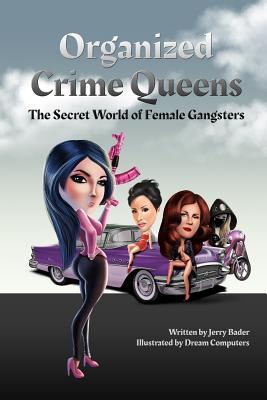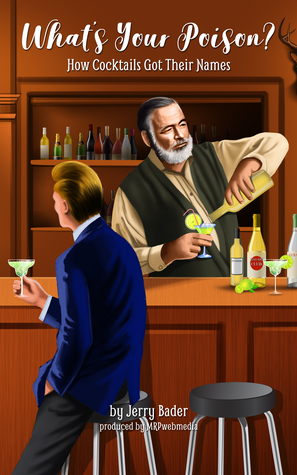Organized Crime Queens: The Secret World of Female Gangsters
What's Your Poison?: How Cocktails Got Their Names
Beating the System
Organized Crime Queens: The Secret World of Female Gangsters
From the bizarre world of female Japanese motorcycle gangs to the historic rise and fall of London’s Forty Elephants, the history of female organized crime is both fascinating and strange. These are the stories, both true and legendary of the female crime bosses that broke the mould of feminine gentility. This is The Secret World of Female Gangsters.
Most of society thinks of women as the gentler sex, the sex with more compassion and empathy, not prone to violence. The truth is history, and current events, are littered with stories of violent women who do whatever it takes to get what they want; women who either revel in, or accept as needed, whatever acts of torture, murder and depravity that are required to achieve their goals. We’re not talking about mundane psychopaths that kill their children and their husbands; or homicidal maniacs that kill randomly without purpose, other than for some sexual or psychological gratification. We’re talking about female organized crime bosses, leaders of highly structured, often successful criminal organizations.
Most everyone knows about the high profile male mobsters; people like Lucky Luciano, Myer Lansky, Bugsy Segal, Arnold Rothstein, and Al Capone: men who became legends, rightly or wrongly, due to the public’s insatiable appetite for literature, movies, and television stories based on their lives. But what about their female counterparts, they definitely existed and still exist. Their stories are both fascinating and cautionary. Their histories provide an alternative perspective on the equality of the sexes; everything has a price. We are talking about smart, capable, talented, ruthless women who under other circumstances might have become leaders in either business or politics; women who demanded respect, loyalty and a big payday; or else.
Why do we call mixed alcohol drinks “cocktails”? How do they get their exotic names: names like the Singapore Sling, Screw Driver, the Alamagoozlum, the Angel’s Kiss, the Hanky Panky, the Harvey Wallbanger, Sex On The Beach, the Monkey Gland, the Brass Monkey, the Margarita, the Japalac, the Lion’s Tail, and many, many more?
Who makes up these names, where are they invented, why, and how do you make them?
These questions will be answered in “What’s Your Poison?” by exploring the incidents, people, and places that prompted the creation of these exotic concoctions.
Who makes up these names, where are they invented, why, and how do you make them?
These questions will be answered in “What’s Your Poison?” by exploring the incidents, people, and places that prompted the creation of these exotic concoctions.
Beating the System
It’s been said that gambling is a tax on the dumb; that may be overly harsh, but the fact is, most gambling venues are designed to guarantee you lose. It doesn’t matter if it’s horseracing, lotteries, casinos, or the annual state fair. As soon as you plunk down your dollar you’re a loser. Those milk bottles at the bottom of the pyramid you’re trying to knock down are filled with lead, and that basketball net that looks so close you can’t miss, is actually oval not round, and barely big enough for a ball to pass through.
Most people like to take a chance every once in a while; maybe they’ll get lucky. It’s a kick, a lark: an afternoon’s entertainment. They know when to walk away… others don’t… some can’t. For them it’s a drug, a search for an unattainable high. Deep down they don’t even want to win. It’s sad. It’s pathetic is what it is.
You see these sorry souls at the track, at the casinos, or anywhere there’s a game of chance. They’ll bet on horses, dogs, camels’… even killer roosters. It’s nuts I know, but their addicts, they’ll bet on people, and that’s the worst bet of all. Gambling is for suckers; that’s why gamblers don’t gamble, they fix the game, and even then, it doesn’t always work.
Horse racing is advertised as the sport of kings. Sure, if that’s what you want to believe. I was a jockey, it was my job, but I made my living as a fixer. You want to know what really goes on behind the scenes. You want to know what horse racing is really all about. Then come a little closer, cause I got a story for you.
GUEST POST
Conflict: Without It There Is No Story
What makes a story interesting? Conflict. Without conflict there’s no drama, no edge, no feeling of oh my god what’s going to happen now? Without conflict a story is boring. Horseracing is a storyteller’s mother lode of conflict, it’s a gold mine of competing interests pitting horse against horse, rider against rider, owner against owner, and gamblers against the rules, and they all boil over from a cauldron of competing self-interest.
In each case there are rules. Like most sports the players, in this case jockeys, have their own set of rules that govern behavior. Break those rules and you may end up being rammed into the infield rail by a half-ton beast traveling at forty miles an hour. The racetrack has rules. Break those and you may end up being disqualified or even set-down. Since horse racing is nothing more than an excuse to gamble, society has rules. Break those and you may end up in jail. The gamblers have rules too. Break those rules and you’ll most likely end up at the airport in the trunk of a car with your head oozing brain fluid. No matter who you are, if you’re in the horse racing business you’re subject to all the rules; the rules made by the authorities and the rules made by the gamblers whose job is to beat the system.
Beating The System is the follow-up book to The Fixer, it follows the further adventures of jockey and fixer Ronny Kleinberg. Winning in horse racing isn’t always about finishing in the money, but it’s always about beating the system. This is the world that Ronny Kleinberg lived in, the grey area between right and wrong, legal and illegal, black and white. It’s a life not for the faint of heart.
As much as people prize their free will, their independence, their right to choose, the fact is, people are all products of their backgrounds and environments; influences that shape attitudes, perspectives, and actions. Ronny Kleinberg is the son of a concentration camp survivor, who instilled in Ronny the strength to face danger and call its bluff; the will to do whatever it took to survive, and damn the consequences, no mater whose rules got bent or broken.
Beating The System by Jerry Bader, Illustrated by Paola Ceccantonti
About the author:
Jerry Bader is an author, publisher, and Senior Partner in MRPwebmedia.com. He has written twelve hybrid graphic novels (including “The Method,” “The Comeuppance,” “The Coffin Corner,” and “Grist For The Mill”), thirteen children’s books (including “Two Dragons Named Shoe,” “The Town That Didn’t Speak,” “The Bad Puppeteer,” “The Criminal McBride,” and “Mr. Bumbershoot, The Umbrella Man”), three marketing books, and several novels and biographies including “The Fixer” and “Organized Crime Queens.”
The graphic novels are unique in that they are designed as screenplays with accompanying storyboard panels to give the reader an enhanced experience akin to reading like a movie producer. Watch for new releases as they come available!
Author's Giveaway
Brand Universe, A Big Idea Marketing Strategy (ebook from Blurb.com)





1 comment:
These books sound very interesting. I think Organized Crime Queens would be my favorite.
Post a Comment